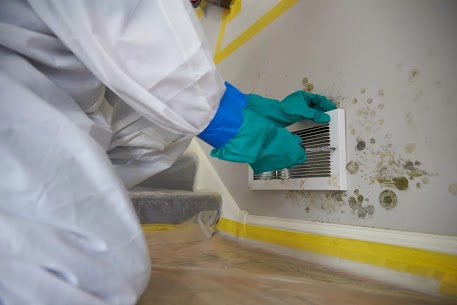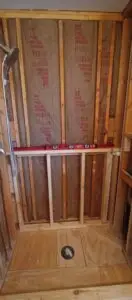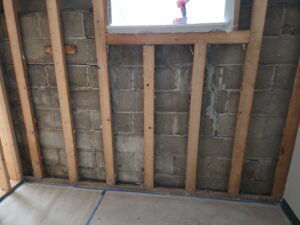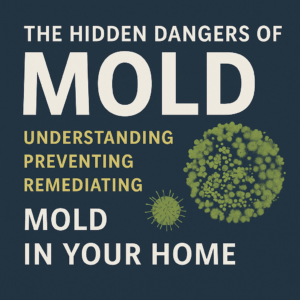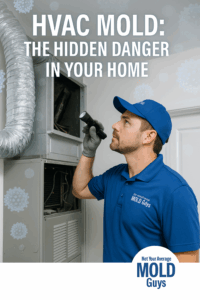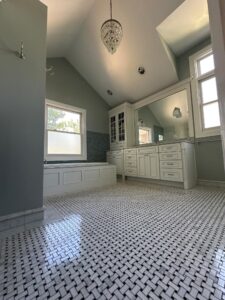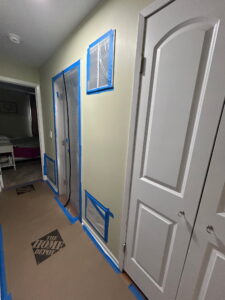Mold and Indoor Air Quality: What You Breathe Matters More Than You Think
When most people think about mold, they picture it creeping up basement walls or hiding under a bathroom sink. But what often gets overlooked is how mold can dramatically affect something you can’t see: the air you breathe.
Your indoor air quality (IAQ) plays a huge role in your health and well-being—and mold is one of the most dangerous contaminants in homes and buildings across the Chicago area. At Not Your Average Mold Guys, we go beyond surface-level removal. We’re here to educate, protect, and improve the quality of your environment from the inside out.
In this post, we’re breaking down everything you need to know about how mold affects your indoor air, the health risks involved, and how to make your home safer starting today.
What Is Indoor Air Quality (IAQ), and Why Does It Matter?
Indoor Air Quality (IAQ) refers to the condition of the air inside your home or building, especially as it relates to the health and comfort of the people living or working there.
According to the EPA, poor indoor air quality ranks among the top five environmental risks to public health. And mold? It’s one of the biggest contributors.
Factors That Impact IAQ Include:
-
Mold and mildew
-
Dust and allergens
-
Volatile Organic Compounds (VOCs) from paint and furniture
-
Carbon monoxide and radon
-
Tobacco smoke
-
Pet dander and pests
While all of these can contribute to poor air quality, mold is unique in its ability to silently spread, affect your respiratory system, and create long-term issues.
How Mold Spores Affect Your Air
Mold releases microscopic spores into the air as part of its reproductive process. These spores float around in the air you breathe, even if the visible mold colony is hidden in your walls, ceiling, or HVAC system.
Here’s where it gets dangerous:
-
Spores can remain airborne for hours
-
They are inhaled deeply into the lungs
-
They can trigger allergies and respiratory issues
-
Some molds produce mycotoxins, which can lead to neurological and immune system problems
Common Mold Types That Harm IAQ:
-
Aspergillus: Triggers asthma and allergies.
-
Stachybotrys (Black Mold): Can cause serious respiratory symptoms and neurological issues.
-
Penicillium: Often found on wallpaper, carpeting, and insulation; highly allergenic.
-
Cladosporium: Common in HVAC systems; known to trigger skin and eye irritation.
Health Symptoms Linked to Mold in the Air
Mold-related illnesses are often misdiagnosed or mistaken for colds, allergies, or general fatigue. That’s why it’s critical to consider mold if you’re experiencing any of the following symptoms—especially when they persist indoors:
Respiratory and Physical Symptoms:
-
Chronic coughing or sneezing
-
Runny nose, congestion, and sinus infections
-
Wheezing and difficulty breathing
-
Sore throat and hoarseness
-
Headaches and fatigue
-
Skin irritation or rashes
-
Eye redness or itchiness
Long-Term Exposure Risks:
-
Asthma development in children
-
Aggravated symptoms for people with COPD or allergies
-
Mycotoxin exposure leading to neurological symptoms like memory issues or dizziness
-
Immune suppression and increased risk of infections
For vulnerable populations—like infants, seniors, and those with compromised immune systems—these effects can be especially dangerous.
How Mold Spreads Through Your Home’s Air
You might think mold in the basement stays in the basement, but unfortunately, that’s not how it works. Mold spores are incredibly small and can travel easily through:
-
HVAC systems – If mold is in or near your air ducts, it gets circulated throughout the entire house.
-
Vents and exhaust fans – Mold in bathrooms or kitchens can spread via exhaust fans and into adjacent rooms.
-
Open doors/windows – Outdoor mold spores can hitch a ride indoors.
-
Foot traffic – Mold can attach to shoes, pets, or clothes.
Once mold takes hold, your home becomes a breeding ground—not just for spores, but for health problems.
IAQ Testing: How to Know If Mold Is Polluting Your Air
If you suspect mold might be affecting your air quality, the first step is proper testing. At Not Your Average Mold Guys, we offer professional IAQ assessments and mold air sampling.
What Our IAQ Test Includes:
-
Airborne mold spore counts (indoor vs. outdoor comparison)
-
Identification of mold types present in the air
-
Humidity level analysis
-
Inspection of HVAC systems and ventilation pathways
-
Lab-certified test results with detailed reporting
We don’t just rely on visuals—we use science to pinpoint the problem.
Real Client Story: The Air They Breathed Was Making Them Sick
One family in Aurora, Illinois called us after months of unexplained sinus issues and fatigue. Despite a spotless home and regular cleaning, their kids were constantly sick.
We conducted air quality testing and found elevated levels of Stachybotrys spores in their HVAC system—black mold hiding behind a wall near the furnace.
After full remediation, duct cleaning, and a few smart ventilation upgrades, their health improved dramatically—and their energy levels returned.
What You Can Do to Improve IAQ and Prevent Mold Growth
Whether or not you’re dealing with mold right now, there are proactive steps you can take to reduce the chance of contamination and breathe healthier air at home:
1. Control Humidity
-
Keep humidity levels between 30–50%
-
Use dehumidifiers in basements or bathrooms
-
Fix leaky faucets and pipes quickly
2. Ventilate Properly
-
Install exhaust fans in bathrooms and kitchens
-
Open windows when weather allows
-
Use HEPA filters in your HVAC system
3. Clean Smart
-
Avoid carpet in moisture-prone areas
-
Clean up water damage within 24–48 hours
-
Disinfect areas prone to condensation
4. Schedule Regular Mold Inspections
Especially after major weather events, roof leaks, or plumbing issues. Our team can catch mold early—before it becomes a serious air quality issue.
How We Help: Not Just a Mold Company—We’re IAQ Specialists
At Not Your Average Mold Guys, we’re not just here to scrub surfaces. We provide long-term solutions to mold and air quality problems, including:
✅ Air quality testing
✅ Full-service mold remediation
✅ HVAC system cleaning and ductwork inspections
✅ Dehumidifier and air purifier recommendations
✅ Post-remediation air quality verification
We’re based in the Chicago area and serve surrounding cities like Naperville, Aurora, Wheaton, and Schaumburg—bringing reliable, expert service to homeowners and property managers alike.
FAQs About Mold and Air Quality
Q: Can I use a store-bought air purifier to eliminate mold?
Air purifiers with HEPA filters can help reduce airborne spores, but they won’t remove active mold colonies. You still need remediation.
Q: How often should I test my indoor air quality?
If you’ve had water damage, renovations, or persistent health symptoms, it’s wise to test annually or as needed.
Q: Will insurance cover mold-related air quality issues?
Coverage depends on your policy and the source of the mold. We can help document issues for claims.
Q: Can mold grow in cold environments like a basement or attic?
Absolutely—mold doesn’t need heat, just moisture and a surface to grow on.
Final Thoughts: Don’t Ignore What You Can’t See
Air is invisible—but the quality of it has a very real impact on your life. If you’ve been experiencing health symptoms that won’t go away or you suspect mold may be hiding in your home, don’t wait.
Let Not Your Average Mold Guys help you clear the air—literally.
📍 Proudly serving Chicago and surrounding suburbs
📞 Call for a FREE consultation: (312) 869-4342
🌐 Visit us at: www.notyouraveragemoldguys.com


